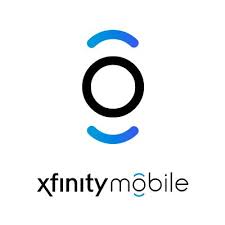 With record-breaking unemployment and an economy in tatters, consumers are abandoning high-priced mobile plans and switching to lower priced cable operator mobile plans.
With record-breaking unemployment and an economy in tatters, consumers are abandoning high-priced mobile plans and switching to lower priced cable operator mobile plans.
Comcast, Charter/Spectrum, and Altice USA saw dramatic customer gains of 547,000 new customers in the first quarter of 2020, primarily at the expense of AT&T, Verizon, T-Mobile, and Sprint, according to Wall Street analyst firm MoffettNathanson. The four largest wireless carriers saw a collective 1.3% drop in subscribers, which counts as the worst performance the traditional wireless sector has seen since 2014. But their loss was the cable industry’s gain, with three cable operators achieving a 130% increase in new mobile customers during the first quarter of the year. The three cable companies now have a combined 3.7 million wireless customers.
Comcast and Charter contract with Verizon Wireless for 4G LTE and 5G service, while Altice USA provides its mobile customers with access to Sprint’s network. The cable operators keep costs down by favoring Wi-Fi connections wherever possible.
Two factors are driving the growth of cable industry mobile plans:
- Price: Altice USA sells its mobile service at just $20/mo per line. Comcast and Charter both sell unlimited data, talk and text plans for $45 a month per line and a “By the Gig” plan option that includes 1 GB of data bundled with unlimited calls and texting for a flat $14/per gig at Charter and $15/1 GB or $30/3 GB or $60/10 GB at Comcast. With unemployment numbers high and consumers worried about the future of the job market, economizing expenses matters.
- Network: Comcast and Charter both rely on Verizon Wireless, recognized as one of the strongest wireless performers in terms of coverage and signal quality. Customers can switch to a cheaper cable company mobile plan without sacrificing network coverage.
![]() MoffettNathanson’s Craig Moffett noted that the COVID-19 pandemic closed most wireless retail stores, and there was a wide belief that wireless industry sales would be anemic at best during the spring as people stayed home. Instead, the cable industry heavily marketed its wireless plans and expanded the number of pre-owned devices qualified for “Bring Your Own Device” switching, allowing customers to swap SIM cards instead of being forced to buy new devices.
MoffettNathanson’s Craig Moffett noted that the COVID-19 pandemic closed most wireless retail stores, and there was a wide belief that wireless industry sales would be anemic at best during the spring as people stayed home. Instead, the cable industry heavily marketed its wireless plans and expanded the number of pre-owned devices qualified for “Bring Your Own Device” switching, allowing customers to swap SIM cards instead of being forced to buy new devices.
 “Given the levels of economic hardship that have accompanied the lockdowns, one can reasonably imagine that these kinds of hyper-aggressive pricing plans won’t have much trouble breaking through to capture market share,” Moffett said in a research note.
“Given the levels of economic hardship that have accompanied the lockdowns, one can reasonably imagine that these kinds of hyper-aggressive pricing plans won’t have much trouble breaking through to capture market share,” Moffett said in a research note.
Moffett predicts the second quarter will show an even greater number of customers dropping traditional mobile plans in favor of plans provided by their local cable company. Some customers report saving over $100 a month by switching.
One potential downside: customers must subscribe to other products sold by their cable provider to get the best price on wireless service. Comcast’s Xfinity Mobile applies a $20 per line monthly charge if the customer does not maintain at least one of the following: Xfinity TV, Internet or Voice service. Spectrum customers that cancel internet service with the cable company will pay an additional $20 monthly charge per line, have Spectrum Wi-Fi speeds limited to 5 Mbps, and are not allowed to add any additional mobile lines.


 Subscribe
Subscribe